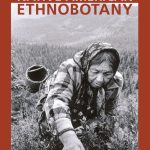Native American Ethnobotany
$79.95
| Title | Range | Discount |
|---|---|---|
| Trade Discount | 5 + | 25% |
- Description
- Additional information
Description
An extraordinary compilation of the plants used by North American native peoples for medicine, food, fiber, dye, and a host of other things. Anthropologist Daniel E. Moerman has devoted 25 years to the task of gathering together the accumulated ethnobotanical knowledge on more than 4000 plants. More than 44,000 uses for these plants by various tribes are documented here. This is undoubtedly the most massive ethnobotanical survey ever undertaken, preserving an enormous store of information for the future.
Daniel E. Moerman teaches anthropology at the University of Michigan-Dearborn. He is widely known as a leading expert in the field of ethnobotany. Dr. Moerman received the Annual Literature Award from the Council on Botanical and Horticultural Libraries and the Distinguished Economic Botanist Award from the Society for Economic Botany.
Native American peoples had a remarkable amount of knowledge of the world in which they lived. In particular, they knew a great deal about plants. There are in North America 31,566 kinds (species, subspecies, varieties, and so on) of vascular plants: seed plants, including the flowering plants (angiosperms) and conifers (gymnosperms), and spore-bearing plants, including the ferns, club mosses, spike mosses, and horsetails (pteridophytes). North America is defined here as North America north of Mexico, and Hawaii and Greenland. American Indians used 2874 of these species as medicines, 1886 as foods, 230 as dyes, and 492 as fibers (for weaving, baskets, building materials, and so on). They used 1190 species for a broad range of other purposes as well, classified in this book as Other. All told, they found useful purpose for 3923 kinds of vascular plants. Native American Ethnobotany also contains information on 106 kinds of nonvascular plants (algae, fungi, lichens, liverworts, and mosses). The data for nonvascular plants are much less complete than those for vascular plants, however.
Native American Ethnobotany includes information on plant use by Native American people. Most of the plants used are native to North America, but some are not. Some are plants that were introduced into North America — some perhaps in pre-Columbian times and some certainly thereafter — and that became naturalized, growing spontaneously. Other plants are introductions that were kept in cultivation. The information in Native American Ethnobotany documents plant usage no doubt dating back to very early times and passed down through generations as traditional knowledge, as well as innovations in response to much more recent plant introductions …
From Conclusions on Usages
There is an enormous amount of real human knowledge contained in Native American Ethnobotany. The earliest evidence we have of human beings using plants for medicine comes from the Middle Paleolithic site of Shanidar in northern Iraq, dated about 60,000 years ago. People have been experimenting with nature since then (and perhaps before), learning what could be eaten, what would stop bleeding or relieve pain, what would make good baskets or colors. People first came to the Americas about 15,000 years ago and have been studying the plants of the two continents ever since. Given that the floras of North America and China are remarkably alike, it is possible that the earliest Asian immigrants to North America saw recognizable plants when they got here.
Much of this accumulated knowledge of useful plants, slowly wrung from nature over millennia, has in a few centuries been lost, at least lost as a part of normal human life. There are specialists — anthropologists, ethnobotanists, phytochemists, pharmacognosists — who are aware of some portions of what this book contains. But in past times this was to a large degree the knowledge of ordinary people. Surely there were specialists, people who were more interested than others in these matters, and they may even have developed esoteric knowledge that they kept to themselves for personal profit. But generally this was normal human knowledge, part and parcel of everyday life. People walked in the world and saw plants they knew to be useful for various purposes. Their children learned of these matters as naturally as our children learn the names of baseball teams or athletic shoes or rock bands. In a world where one may buy a bottle of aspirin tablets at a grocery store for little more than the price of the bottle there is not much need for people to be able to recognize willow, black birch, spiraea, or wintergreen as naturally occurring painkillers.
And I do not believe there is a need for anyone to give up on aspirin tablets and rely on willow twigs. One need not eat medicinal plants in order to appreciate them, any more than a bird-watcher needs to eat a curlew to enjoy it. But when one knows something of the uses people have made of thousands of the wild plants around us, the plants take on a new meaning, a new value greater than their beauty or their cooling shade or their pleasant scent.
From "Native Americans"
The names of Native American or American Indian groups is a complicated matter. Even the phrase American Indian is problematic. Christopher Columbus and his followers were naive about the location of "India." And so, many people now seem to prefer the term Native American. But it is also the case that indigenous peoples were here long before the continents of the New World were named after the Italian navigator, Amerigo Vespucci. In Canada, the generic term usually used is Native People. Yet the fact remains that many people have been quite happy with the term Indian. One of the radical movements of the 1960s, for example, was known as AIM, the American Indian Movement. Since these names often have political significance it is for all practical purposes impossible to refer generically to the indigenous population of the Americas without offending someone, but such is not the intention here.
There are similar problems with tribal names. A classic case is the name Eskimo. The word is, apparently, an English mispronunciation of a French mispronunciation of a Montagnais or Micmac word
ayashkimew, which seems to have meant something like "eaters of raw meat," intended as a nasty insult. The Eskimo people generally call themselves Inuit or Innuit, meaning "people." I am unaware of the Inuit name for the Micmac but my guess is that it was equally insulting. Such derived names are not always insults, however. The name Navaho or Navajo is a Spanish variation on a Tewa word meaning "large arroyo with cultivated fields," a place name. The Navajo name for themselves is Dene, meaning "people," but many Navajo also call themselves Navajo. Again, the names used to refer to particular Native American tribes can occasion political debate. Referring to one group by a term that means "people" implicitly asserts that other groups are something other than people, for example. Names used in
Native American Ethnobotany are not intended in any way to offend anyone. I have elected to use the names for peoples reported in the original sources. This means that material for "the same people" is sometimes listed under different designations, but rarely is it for the same people at the same time. There are 291 groups mentioned in Native American Ethnobotany,
…
From "Organization of the Information in Native American Ethnobotany"
Ethnobotanical Information
Under each plant name, usages are categorized first by the five main categories — Drug, Food, Fiber, Dye, Other — in that order. Each of the five main categories is next divided alphabetically by tribe, all the names of which are listed in the previous chapter under Native Americans. Following the tribe name are all the uses of the plant, listed alphabetically according to the categories defined in the previous chapter under Plant Usage Categories …
The statement or statements on usage are followed by an abbreviated reference, for example, (184:197) … The number preceding the colon refers to the source from which the information came, and sources are enumerated in the Bibliography. The number following the colon is the page number in that original source. When the original source used a plant name differing from that adopted in the Catalog of Plants, that is, the source cited a synonymous name, the plant name used in the source is also given within the parentheses, for example, within the entry for Acer negundo var. interius, (as Negundo interius 138:38) … Two comprehensive Plant Usage Indexes are provided so that the information collected in the Catalog of Plants can be found in ways other than by plant name:
Index of Tribes. Categories of plant usage are arranged by names of Native American groups, as listed in the previous chapter under Native Americans. Categories of plant usage are listed first under one of the five main categories — Drug, Food, Fiber, Dye, Other — and then alphabetically under the particular usage … Index of Usages. Plant genera are arranged alphabetically under the categories of plant usage, first under one of the five main categories — Drug, Food, Fiber, Dye, Other — and then alphabetically under the particular usage, as defined in the previous chapter under Plant Usage Categories …
“The definitive book on the subject. Covering over 4,000 plants with some 44,000 uses, this represents years of research on the author’s part.” —Washington Daily NewsNative American Ethnobotany includes information on plant use by Native American people. Most of the plants used are native to North America, but some are not. Some are plants that were introduced into North America — some perhaps in pre-Columbian times and some certainly thereafter — and that became naturalized, growing spontaneously. Other plants are introductions that were kept in cultivation. The information in Native American Ethnobotany documents plant usage no doubt dating back to very early times and passed down through generations as traditional knowledge, as well as innovations in response to much more recent plant introductions …
From Conclusions on Usages
There is an enormous amount of real human knowledge contained in Native American Ethnobotany. The earliest evidence we have of human beings using plants for medicine comes from the Middle Paleolithic site of Shanidar in northern Iraq, dated about 60,000 years ago. People have been experimenting with nature since then (and perhaps before), learning what could be eaten, what would stop bleeding or relieve pain, what would make good baskets or colors. People first came to the Americas about 15,000 years ago and have been studying the plants of the two continents ever since. Given that the floras of North America and China are remarkably alike, it is possible that the earliest Asian immigrants to North America saw recognizable plants when they got here.
Much of this accumulated knowledge of useful plants, slowly wrung from nature over millennia, has in a few centuries been lost, at least lost as a part of normal human life. There are specialists — anthropologists, ethnobotanists, phytochemists, pharmacognosists — who are aware of some portions of what this book contains. But in past times this was to a large degree the knowledge of ordinary people. Surely there were specialists, people who were more interested than others in these matters, and they may even have developed esoteric knowledge that they kept to themselves for personal profit. But generally this was normal human knowledge, part and parcel of everyday life. People walked in the world and saw plants they knew to be useful for various purposes. Their children learned of these matters as naturally as our children learn the names of baseball teams or athletic shoes or rock bands. In a world where one may buy a bottle of aspirin tablets at a grocery store for little more than the price of the bottle there is not much need for people to be able to recognize willow, black birch, spiraea, or wintergreen as naturally occurring painkillers.
And I do not believe there is a need for anyone to give up on aspirin tablets and rely on willow twigs. One need not eat medicinal plants in order to appreciate them, any more than a bird-watcher needs to eat a curlew to enjoy it. But when one knows something of the uses people have made of thousands of the wild plants around us, the plants take on a new meaning, a new value greater than their beauty or their cooling shade or their pleasant scent.
From "Native Americans"
The names of Native American or American Indian groups is a complicated matter. Even the phrase American Indian is problematic. Christopher Columbus and his followers were naive about the location of "India." And so, many people now seem to prefer the term Native American. But it is also the case that indigenous peoples were here long before the continents of the New World were named after the Italian navigator, Amerigo Vespucci. In Canada, the generic term usually used is Native People. Yet the fact remains that many people have been quite happy with the term Indian. One of the radical movements of the 1960s, for example, was known as AIM, the American Indian Movement. Since these names often have political significance it is for all practical purposes impossible to refer generically to the indigenous population of the Americas without offending someone, but such is not the intention here.
There are similar problems with tribal names. A classic case is the name Eskimo. The word is, apparently, an English mispronunciation of a French mispronunciation of a Montagnais or Micmac word
ayashkimew, which seems to have meant something like "eaters of raw meat," intended as a nasty insult. The Eskimo people generally call themselves Inuit or Innuit, meaning "people." I am unaware of the Inuit name for the Micmac but my guess is that it was equally insulting. Such derived names are not always insults, however. The name Navaho or Navajo is a Spanish variation on a Tewa word meaning "large arroyo with cultivated fields," a place name. The Navajo name for themselves is Dene, meaning "people," but many Navajo also call themselves Navajo. Again, the names used to refer to particular Native American tribes can occasion political debate. Referring to one group by a term that means "people" implicitly asserts that other groups are something other than people, for example. Names used in
Native American Ethnobotany are not intended in any way to offend anyone. I have elected to use the names for peoples reported in the original sources. This means that material for "the same people" is sometimes listed under different designations, but rarely is it for the same people at the same time. There are 291 groups mentioned in Native American Ethnobotany,
…
From "Organization of the Information in Native American Ethnobotany"
Ethnobotanical Information
Under each plant name, usages are categorized first by the five main categories — Drug, Food, Fiber, Dye, Other — in that order. Each of the five main categories is next divided alphabetically by tribe, all the names of which are listed in the previous chapter under Native Americans. Following the tribe name are all the uses of the plant, listed alphabetically according to the categories defined in the previous chapter under Plant Usage Categories …
The statement or statements on usage are followed by an abbreviated reference, for example, (184:197) … The number preceding the colon refers to the source from which the information came, and sources are enumerated in the Bibliography. The number following the colon is the page number in that original source. When the original source used a plant name differing from that adopted in the Catalog of Plants, that is, the source cited a synonymous name, the plant name used in the source is also given within the parentheses, for example, within the entry for Acer negundo var. interius, (as Negundo interius 138:38) … Two comprehensive Plant Usage Indexes are provided so that the information collected in the Catalog of Plants can be found in ways other than by plant name:
Index of Tribes. Categories of plant usage are arranged by names of Native American groups, as listed in the previous chapter under Native Americans. Categories of plant usage are listed first under one of the five main categories — Drug, Food, Fiber, Dye, Other — and then alphabetically under the particular usage … Index of Usages. Plant genera are arranged alphabetically under the categories of plant usage, first under one of the five main categories — Drug, Food, Fiber, Dye, Other — and then alphabetically under the particular usage, as defined in the previous chapter under Plant Usage Categories …
“A remarkable body of research. No other single reference book even comes close to it.” —American Survival Guide Magazine
“Native American Ethnobotany is an essential reference for all those interested in the uses of plants.” —Wild Foods Forum
“This typographically attractive book presents its data with interest and humor.” —Taxon
“An enormous achievement. . . . Fun to browse through it and to discover many exciting details about plant use in North America.” —Journal of Ethnopharmacology
“This work is an invaluable resource for ethnobotanists, anthropologists, herbalists, and other researchers.” —Herb Quarterly
“An impressive compilation of information on plants used by Native Americans. . . . An important library book.” —Northeastern Naturalist
“A monumental work.” —Plants and People
“Moerman has done an excellent job of presenting the information in useable form.” —American Biology Teacher
“This scholarly and weighty tome contains a stupendous quantity of high-quality information about the use of plants by Native American peoples.” —Edinburgh Journal of Botany
“I have no hesitation in recommending this book as a fundamental and highly valuable source of fascinating information on the plants and the peoples of North America.” —Edinburgh Journal of Botany
“Congratulations to Timber Press for doing it right.” —Whole Earth
“Anyone interested in the economic botany and ethnobotany of indigenous groups of North America needs to have a copy of this book. It is the standard reference on Native American plant uses.” —HerbalGram
Additional information
| Dimensions | 2.125 × 9 × 11.25 in |
|---|---|
| Imprint | |
| Format | |
| ISBN-13 | |
| ISBN-10 | |
| Author | |
| Audience | |
| BISAC | |
| Subjects | botany, culture, tribes, indigenous, traditions, uses, customs, ethnobotanic theory, dyeing, SOC002010, REF010000, HIS028000, medicinal, directory, religious, history, horticulture, plants, native, Food, social, Herbs, medical, science, ritual, anthropology |












